Table of Contents
What are the best yogurts for kids? With so many brands to choose from, it can be confusing. As a dietitian mom, I’ve summarized everything you need to know.

Yogurt is one of the most versatile, quick and easy kid-approved food products out there, which makes it an ideal food to have on hand as a busy parent of young kids. As a pediatric dietitian and busy mom of three kids myself, I often rely on yogurt as a nutritious source of protein that can be added to snacks and meals in a pinch.
But because it’s such a popular choice for consumers (parents included), there is a sea of choices available in the grocery store—everything from plain Greek yogurt to sweet fruit-flavoured yogurt tubes marketed for kids. There are SO many brands and types to choose from! A question I get all the time in my practice is “which yogurt should I buy for my kids?”. Don’t worry I’ve got you! I will take you through everything you need to know about yogurt for kids, which options and brands are the best (and why), how to serve yogurt to your kids, and much more! Here’s what we’ll cover:
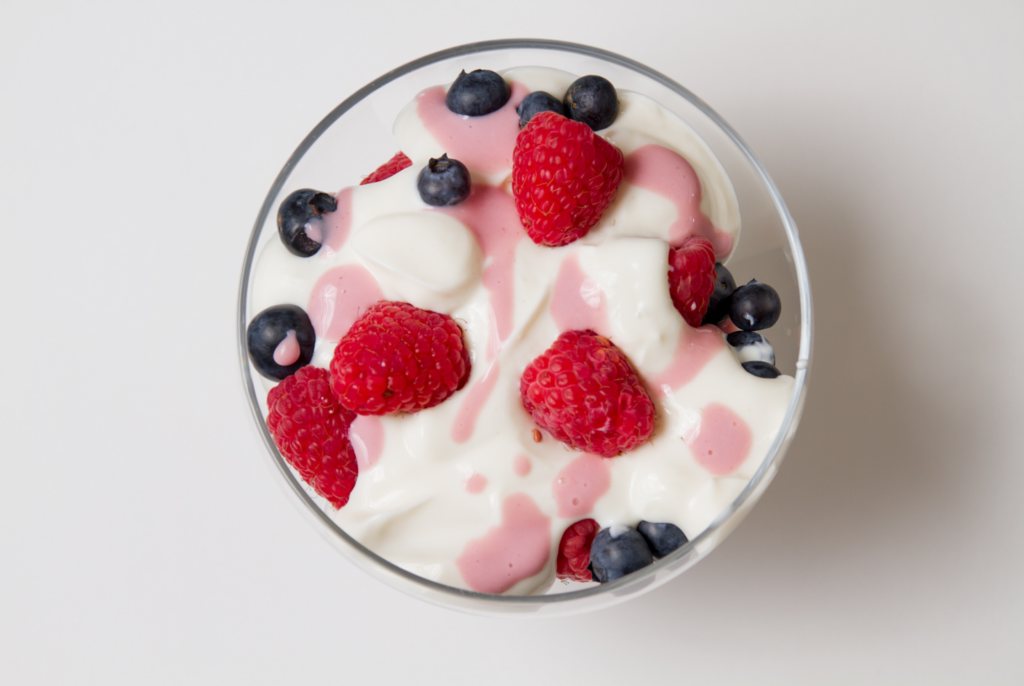
How to choose the best yogurts for kids:
When it comes to choosing the best yogurts for kids there are a few things I look out for. First, every child will have a different preference for texture, flavour, thickness etc. Choose one that you, first and foremost, know that your child will consume and enjoy. When it comes to nutrition, consider these few things:
Fat content:
Aim for at least 1.5% milk fat (ideally 2% or higher).
Protein content:
Aim for at least 4 grams of protein per 100-gram serving (I prefer 8 grams of protein per 100-gram serving, which is what is found in Greek yogurt) However, it can be difficult to find vegan yogurts with this level of protein. You can try sprinkling in a tbsp of chia seeds, or hemp hearts to bump of the protein of dairy-free yogurts!
Sugar content:
9 grams of added sugar or less per 100-gram serving size. Please note, sugar is listed under total carbohydrates on the nutrition label. The total carbohydrate amount is less important. Focus more on the “added sugar” amount.
To keep the added sugar level down, plain yogurt is the best choice. From there, flavoured and mixed yogurts tend to be next lowest in sugar, followed by fruit on the bottom, then yogurt with stir-in options. Yogurt tubes tend to be quite high in added sugar as well. This doesn’t mean that you shouldn’t offer your kids these higher-sugar options (or restrict them or label them as “junk”). These are fun and convenient options that you can offer your kids occasionally for sure!
The yogurt list below is by no means an exhaustive list of all the suitable yogurt options for children, however, it is a good place to start! I like to recommend plain yogurt for babies and young toddlers especially, as a blank canvas that parents can sweeten and customize with other additions such as fruit, granola, syrup etc. to their liking! Once kids are older than 2, you can venture into flavoured yogurts if you wish.
Best Yogurts for Kids
In no particular order, here are the best of the best yogurts for kids. There is something to suit a wide variety of needs!
Best Regular Yogurts
- Astro Original Yogurt
- Iogo Plain Creamy Yogurt
- Mason Riviera Yogurt
- Fage Total 2% yogurt
- Olympic Natural Yogurt
Best Flavored Regular Yogurts
- Fage Fruits Strawberry Yogurt
- Stonyfield Organic Yobaby Vanilla Yogurt Cups
- Oui Whole Milk Vanilla Yogurt
- Nancy’s Whole Milk Vanilla Yogurt
- Brown Cow Whole Milk Vanilla Yogurt
Best Higher-Protein (Greek or Skyr) Yogurts
- Siggi’s Icelandic Yogurt
- Liberte Greek Yogurt
- Stonyfield Organic Greek Yogurt
- Icelandic Provisions Skyr Whole Milk Yogurt
- Chobani Whole Milk Greek Yogurt
Best Flavored Higher-Protein (Greek OR Skyr) Yogurts
- Liberte Vanilla 30% Less Sugar
- Chobani Less Sugar Strawberry Yogurt
- Siggi’s Vanilla Cinnamon Yogurt
- Fage TruBlend Flavored Yogurt
- Mason Riviera Vanilla Greek Yogurt
Best Probiotic Yogurts
- Activia Probiotic Yogurt
- Stonyfield Probiotic Whole Milk Yogurt
- Nancy’s Grass Fed Probiotic Yogurt
- Astro Bio Best Probiotic Yogurt
- Organic Meadow Whole Milk Yogurt
Best Flavored Probiotic Yogurts
- Activia Probiotic Vanilla Yogurt
- Stonyfield Probiotic “Banilla” Yogurt
- Nancy’s Whole Milk Probiotic Honey Yogurt
- Brown Cow Whole Milk Maple Yogurt
- Organic Meadow Whole Milk Blueberry Yogurt
Best Lactose-Free Yogurts
- Fage Lactose-free Yogurt
- Astro Bio Best Lactose-free Yogurt
- Green Valley Lactose-free Whole Milk Yogurt
- Liberte Plain 2% Lactose-free Yogurt
- Mason Riviera Gourmet Lactose-free yogurt
Best Flavored Lactose-Free Yogurts
- Activia Probiotic Lactose Free Vanilla Yogurt
- Green Valley Lactose-free Vanilla Bean Yogurt
- Painterland Sisters Lactose-Free Meadow Berry Yogurt
- Froger Project Cashew Vanilla
- Nancy’s Probiotic Oat Milk Vanilla Yogurt
Best Plant-Based Yogurts
- Mason Riviera Coconut Milk Yogurt
- Mason Riviera Oat Milk Yogurt
- Siggi’s Plant-Based Coconut Yogurt
- Kite Hill Almond Milk Yogurt
- Forager Project Cashew Yogurt
Best Flavored Plant-Based Yogurts
- Mason Riviera Coconut Milk Cherry Yogurt
- Silk Coconut Yogurt Strawberry-Raspberry
- Siggi’s Plant-Based Coconut Yogurt Strawberry
- Lavva Pili Nut Mango Yogurt
- AYO Strawberry Almond Milk Yogurt
Best Yogurt Drinks/Pouches:
- Activia Probiotic Yogurt Drink: One serving contain 1 billion Bifidobacterium lactis bacteria which help promote healthy digestion, immune function, lactose digestion and helps reduce inflammation in the gut.
- DanActive Probiotic Yogurt Drink: One serving contains 1 billion Lactobacillus casei bacteria which have shown to help protect against infectious bacteria, promoting bowel regularity and immune function.
- Nanö – IÖGO Drinkable Yogurt: Bottle shape is easy for young kids to hold, contains less added sugar than other drinkable yogurts, and has a spill proof cap making it ideal for travel!
- Siggi’s Icelandic Yogurt Pouches: Higher protein option, has simple ingredients, and contains less added sugar than other brands
- Stonyfield Organic Yo Baby Pouches: This brand has the added vitamin D, and simple ingredients including pureed vegetables and fruit added to the formula.
- Danone Yogurt Drink for Kids: This drink has 40% less sugar added than other yogurt drink brands with not artificial flavors or colors. It contains real pureed fruit and is a good source of both calcium and vitamin D!
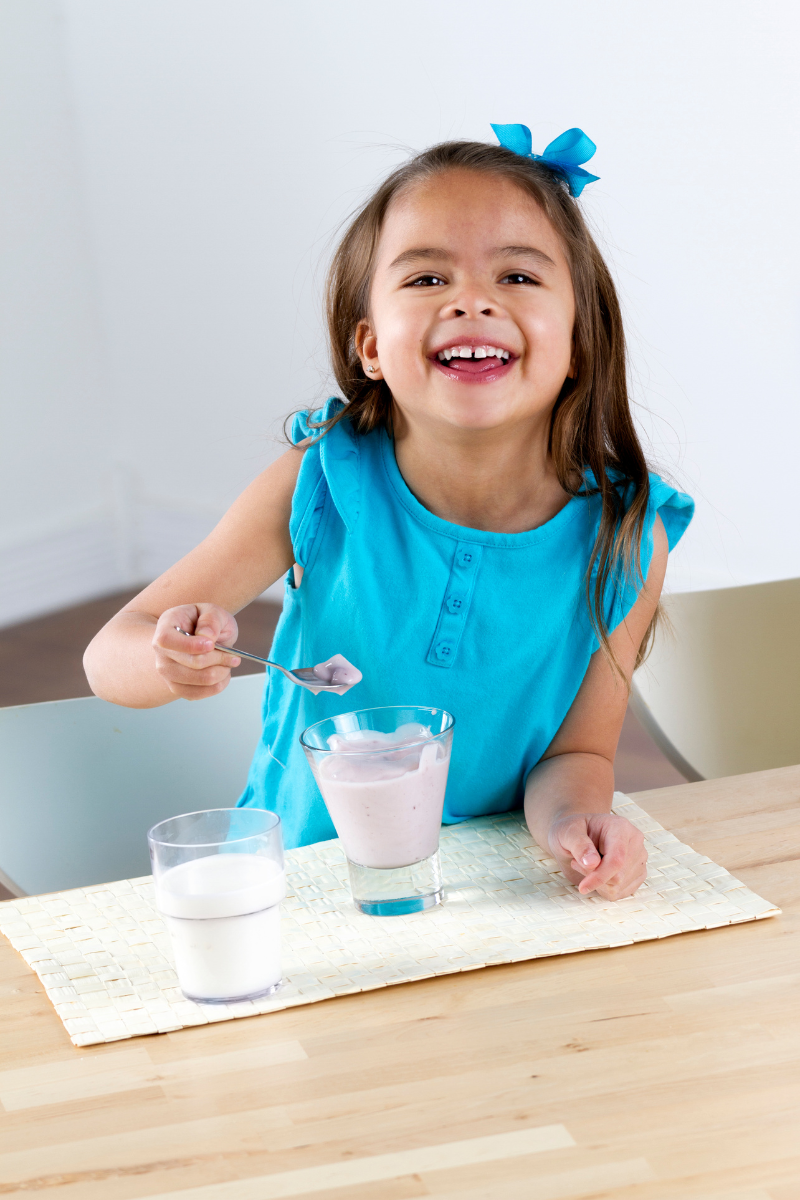
Yogurt Nutrition:
Not only is yogurt easy to have on hand requiring little to no prep time, but it is also an exceptionally nutrient-dense option. In fact, yogurt provides a variety of essential macro- and micronutrients that kids need for growth and development.
Yogurt provides:
- Protein: Depending on the type of yogurt, it can contain between 4-14g of protein per ½ cup serving. Protein provides essential building blocks for growth and development and helps fill kids’ tummies so they feel satisfied for longer.
- Carbohydrate: Although yogurt is lower in lactose (a type of sugar found in milk) than fluid milk, lactose is still present in yogurt. This is the natural sugar (or source of carbohydrate) present in yogurt. Carbohydrates are our preferred energy source for our brain and body to function properly.
- Fat: this important macronutrient is essential for brain development, absorption of fat-soluble vitamins (A, D, E and K) and hormone production. I always recommend 2% or “whole” yogurt for young kids (any child under 10) due to their high energy needs for rapid growth and development.
- Probiotics: yogurt is made with the addition of beneficial bacterial cultures that ferment lactose (the source of carbohydrate mentioned above) into lactic acid which thickens milk proteins and contributes to the characteristic tangy yogurt flavor. In some cases, even more beneficial bacteria are added into yogurt during processing (like lactobacilli and bifidobacteria) to provide further health benefits such as supporting digestive health and immune function.
- An excellent source of calcium: this mineral is key in the mineralization of bones and teeth, also promoting healthy muscle and nerve function.
- An excellent source of vitamin B12: essential for the development of a healthy nervous system, red blood cells, as well as supporting proper metabolic function and energy production in the body.
- An excellent source of phosphorous: a key component of all body cells, playing an important role in cell structure and function, bone and teeth formation, electrolyte balance and muscle contraction.
- A good source of vitamin A: essential for healthy vision, supporting proper immune function, as well as maintaining skin integrity and strong bones.
- A good source of potassium: helps regulate fluid and electrolyte balance in the body while contributing to healthy heart, nerve, muscle as well as kidney function.

Why yogurt is a good choice for kids (from babies to teens!)
Not only is yogurt packed with essential nutrients (like mentioned above), it is an incredibly versatile food that can be added to so many recipes, meals and snacks. Here are my top reasons yogurt is a great option for kids:
It’s safe for young kids
- Yogurt is a safe and nourishing option for kids as young as 6 months old and is a great way to offer more protein, calcium, Vitamin D and other nutrients that are important for growth and development. It is an easy food source that helps build strong bones with essential minerals like phosphorus and calcium.
It has a mild flavor
- It has a mild flavor and smooth, creamy, uniform texture (if there aren’t fruit chunks) that is generally well-accepted by kids as young as 6 months old, all the way into their teen years. It’s versatile and can be eaten on its own, or alongside other nutritious foods.
It’s versatile
- Yogurt is an easy and versatile protein source that can be served alongside a homemade muffin or granola bar, or any kind of fruit or vegetable to create a balanced satisfying snack option. It can also be mixed into smoothies, added to baking recipes, made into a dip and much more.
Types of yogurt you’ll find at the store
Regular
Varying types of milk (whole, skim or partially skimmed) are inoculated with specific strains of yogurt culture (beneficial bacteria) to ferment the milk into a thicker creamy texture. The resulting yogurt is stored at refrigerated temperatures to help set the yogurt. Regular yogurt contains less carbohydrate, but similar amounts of protein to milk per volume with ½ cup providing about 4 grams of protein.
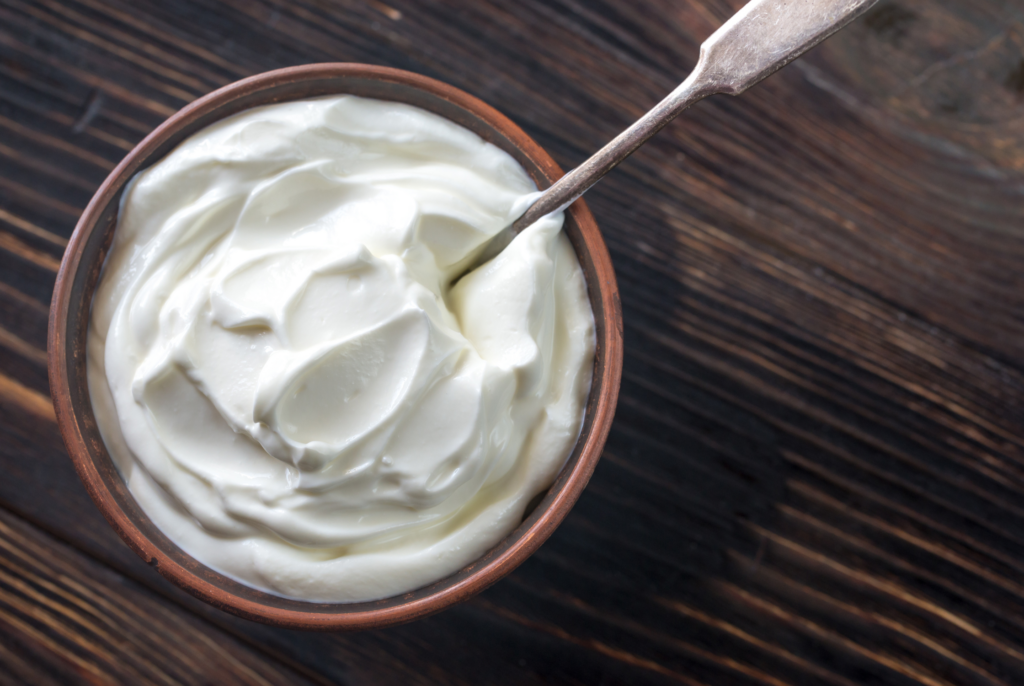
Greek
This high-protein yogurt has been further processed by adding it to a fine mesh cloth, and allowing some of the liquid in it (which contains whey) to slowly drain out, resulting in a thicker yogurt. Greek yogurt has more protein and less carbohydrate than regular yogurt. In a ½ cup serving there is a whopping 11g of protein.
Icelandic Skyr
This is another high-protein yogurt that is processed similar to Greek yogurt but is traditionally made in Iceland. The difference is that this yogurt is strained even more than Greek yogurt resulting in an even thicker, higher protein yogurt. Skyr yogurt contains about 14g of protein per ½ cup serving.
Lactose-free yogurt
Lactose-free yogurt is made by adding lactase enzyme to milk and carefully mixing it into yogurt. By adding it to the milk, the lactase splits apart the lactose (which is the carbohydrate in milk and yogurt) into its component sugars to render it more digestible to those who have a lactose intolerance.
Plant-based yogurt
Milks made from plant-based ingredients such as coconut, cashews, almonds, soybeans, and oat are then heated and thickened with thickeners such as pectin, agar or starches. The thickened mixture is then fermented, similar to regular yogurt, with specific bacterial strains to impart the characteristic tangy flavor of yogurt. Plant-based yogurts often have added plant proteins added such as pea protein, soy protein etc. to enhance the mouthfeel and satisfying factor. Even so, plant-based yogurts are often lower in protein than other yogurt varieties. Although they aren’t nutritionally equivalent, or my first choice for growing kids, they are a good option for vegan and vegetarians, or people who can’t tolerate cow’s milk.
Probiotic yogurts
While most commercial yogurts contain probiotic bacteria, not all of them contain sufficient amounts of live (or active) bacterial cultures to provide meaningful health benefits. What does this mean? Not all yogurt brands can boast the word “probiotic” on their label unless they have been regulated to contain a high enough concentration of living probiotic bacteria to benefit your health if the product is consumed.
Yogurt drinks, Tubes and Pouches
These yogurt products are marketed as convenient on-the-go snack options for kids, packaged in small easy-to-manage bottles, tubes, and pouches that are easily held by small hands. These products are generally made from regular yogurt and can be convenient products to offer to kids on occasion, especially for travel days or when kids are on the go. They provide a good source of calcium and some protein, and some are packed full of healthy probiotic bacteria as well! These products are however often high in sugar and may contain artificial colors and flavors to improve consistency in appearance and flavor profile. The options I have listed below are brands that have lower amounts of added sugar, and simpler ingredients compared to other brands.
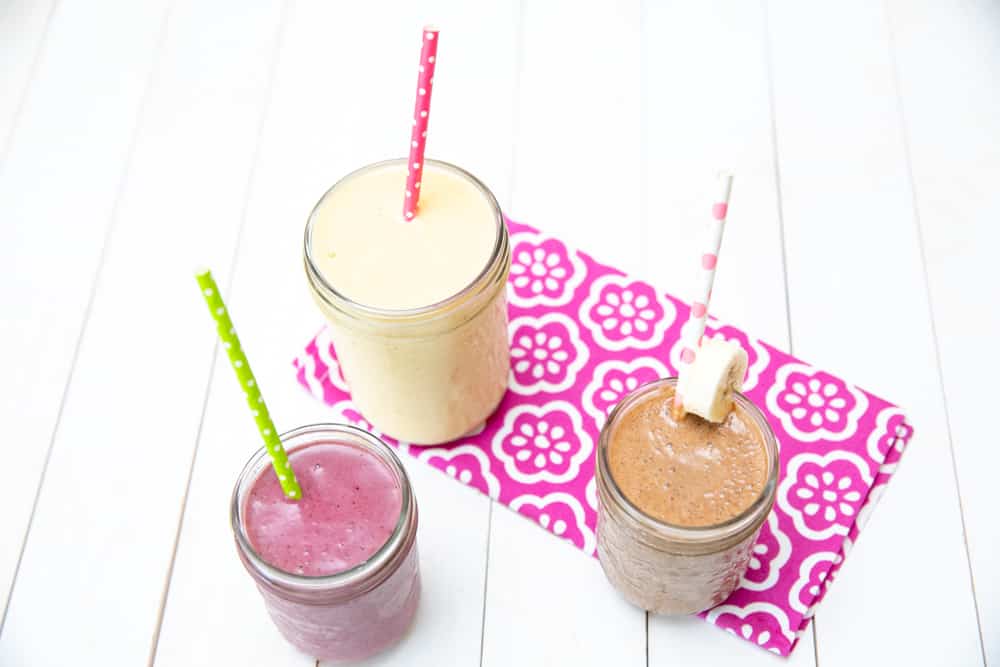
Different ways to serve yogurt to kids
- In a bowl topped with a favorite store bought (or homemade granola) or favorite cereal
- Blended into a delicious and creamy fruit smoothie or a fall inspired pumpkin pie smoothie
- Make homemade frozen yogurt like this protein packed mixed berry frozen Greek yogurt
- Stir yogurt into cooked oatmeal for added creaminess and protein
- In a yogurt parfait mixed with nuts, seeds, fresh fruit, and granola
- Added into pancake, waffle, or muffin batter to amp up protein, imparting a moist delicious texture
- Mix plain yogurt with honey/maple syrup and peanut butter to make a delicious dip for fresh fruit (such as strawberries, banana and sliced apples)
- Served as a savory dip (such as tzatziki) for vegetables or to add into sandwiches or wraps
- Used in place of sour cream to add a kick of protein to your baked potato, taco salad or on top of chili
- Try making frozen yogurt “bark” like this strawberry chocolate coconut frozen yogurt bark!
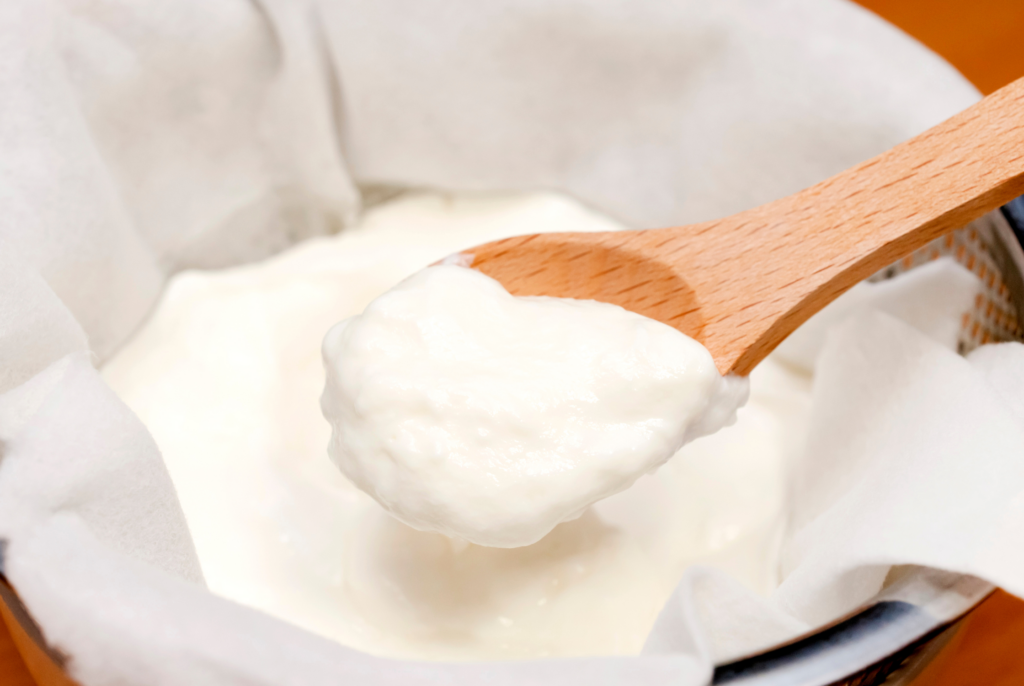
Is homemade yogurt a good option?
If you are keen on making your own yogurt, give it a shot! Making your own yogurt allows you to choose what ingredients go into it including the type of milk, what yogurt culture you use, and if/how much sugar you want to add. The main con to making your own yogurt is that is much more time-consuming than picking some up at the store. You will have to carefully monitor the fermentation process, as well as heating and cooling the yogurt mixture to the correct temperatures. Homemade yogurt typically doesn’t last for as long, and if the equipment isn’t properly sanitized there is a higher risk for unwanted bacterial contamination.
Ultimately it is your choice whether or not you choose to make your own yogurt or if you want to simply buy yogurt from the store!
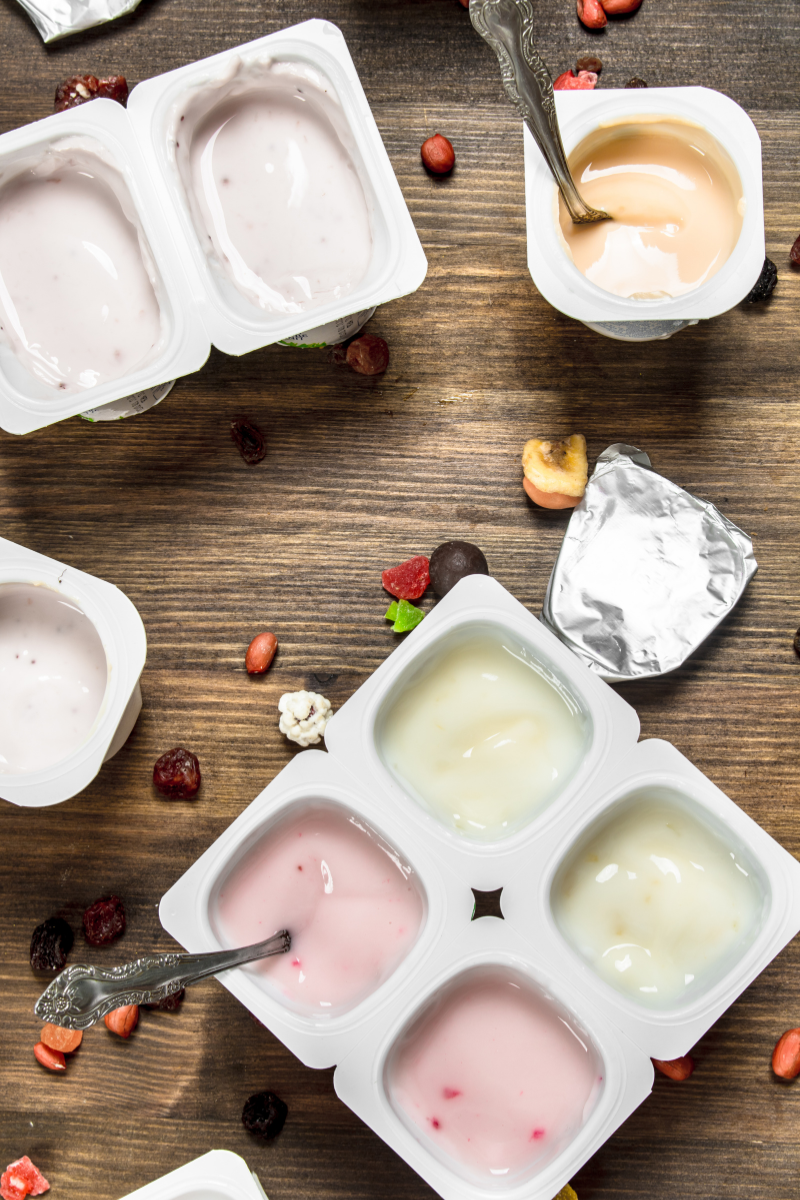
Do flavored yogurts have too much sugar?
First of all, it is 100% OK to buy flavored yogurt for your kids (who are over the age of 2). By adopting the philosophy of food neutrality in your home, the goal is to avoid labelling (good, bad, healthy, unhealthy) or moralizing food of any kind. This means we need to avoid putting one type of yogurt on a moral pedestal over another (especially in front of our kids). With that said, it is important that parents also consider the overall nutritional value of foods that are served throughout the week to our kiddos. This means trying out a variety of different yogurt options!
I like to recommend opting for plain yogurt most often as it acts as a perfect blank slate to add any desired sweetener (honey, jam, maple syrup, Nutella, etc.) to your desired taste. This way you get to control the amount of sugar that is added and have more creative leeway in the yogurt concoctions you offer! That being said, I’m also a busy mom who can appreciate throwing a yogurt cup or yogurt tube into a lunch kit and calling it a day! Let’s be honest, parents don’t always have the patience (or time) to mix up creative yogurt concoctions. Here’s the good news: If you want a pre-sweetened yogurt, but without too much sweetness, there are varieties (such as Liberte 30% less sugar, and Chobani 40% less sugar) that offer lower sugar versions without artificial sweeteners (so they are suitable for kids!).
Are artificial food dyes in yogurt unsafe?
Artificial food colors are tightly regulated by Health Canada and the FDA so that they are safe for consumer consumption in the amounts added to the food item. Often the only yogurts that contain food dyes are the flavored ones that require a more even and consistent color to be acceptable to consumers. Both Canada and the United States require that all food colors are listed on the label which can be written as “artificial colors added” or the actual name of the food dye. This way you can check if your yogurt has any added colors before purchasing.
Due to popular demand, it is becoming more common for yogurt manufacturers to switch to natural food dyes such as spirulina, turmeric, and beet root.
What if my child is allergic to yogurt and other dairy products?
If your child has a cow’s milk protein allergy, then they should not consume any food product containing cow’s milk. This spans beyond just dairy products, and includes any food items that contain milk, whey, casein, and modified milk ingredients.
Luckily there are some great milk-free yogurt alternatives out there! Your child will be able to enjoy the vegan yogurt options listed above that are made from milk alternatives such as coconut, oat, almond and cashew milk! Read through Allergy Canada on milk for more information on how to manage your child’s cow’s milk allergy.
Bottom Line:
Yogurt is such a convenient food that is both nutritionally dense and versatile. However, it can be difficult for parents to know which yogurt type and brand is the best to buy for their kids!
Always buy 2% or “whole” yogurt for kids under the age of 10 to help them reach their high energy needs. For kids under 2, plain yogurt is best! Added sugars take up precious real-estate in those tiny tummies, as young kiddos need all they can get to support this rapid stage of growth and development.
From regular thinner consistency yogurt to high protein, thick and creamy yogurt, it really comes down to your preference on what to buy for your family! Yogurt is an exceptionally nutrient dense and easy food option that provides essential nutrients (protein, calcium, vitamin B12, vitamin A and more!) for your child’s growth and development.
For kids who can’t tolerate dairy or regular yogurt, there are many yogurt brands that have lactose-free or vegan (milk-free) options!
References:
- Milk – Food Allergy Canada
- Color Additives Questions and Answers for Consumers | FDA
- Questions and Answers on Probiotics – Canada.ca
- Probiotic Chart
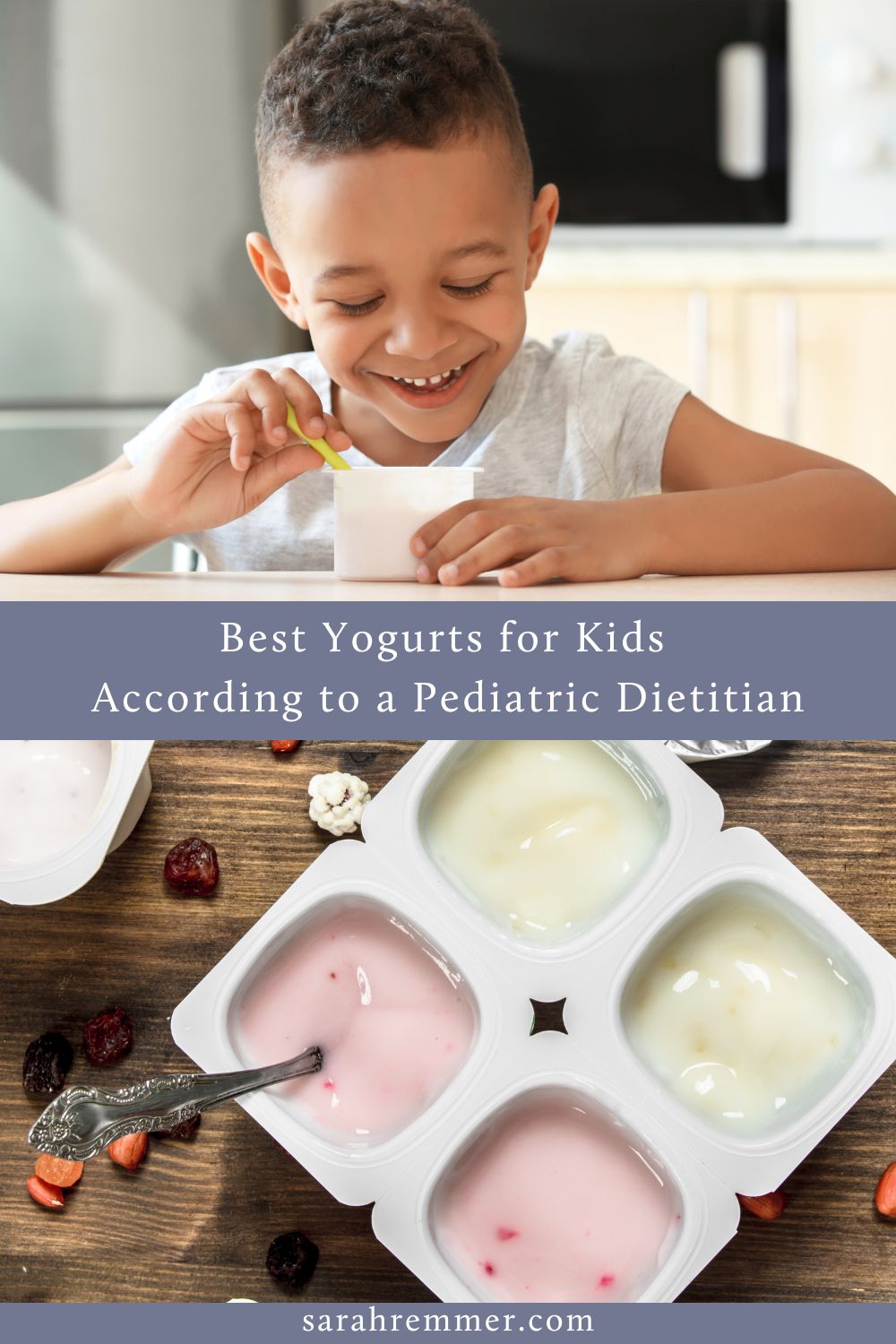





More Stories
United Healthcare’s ransomware attack shows why supply chains are under siege
Nutrition Tips For Ramadan | JM Nutrition
Probiotics for IBS | The Nutritionist Reviews